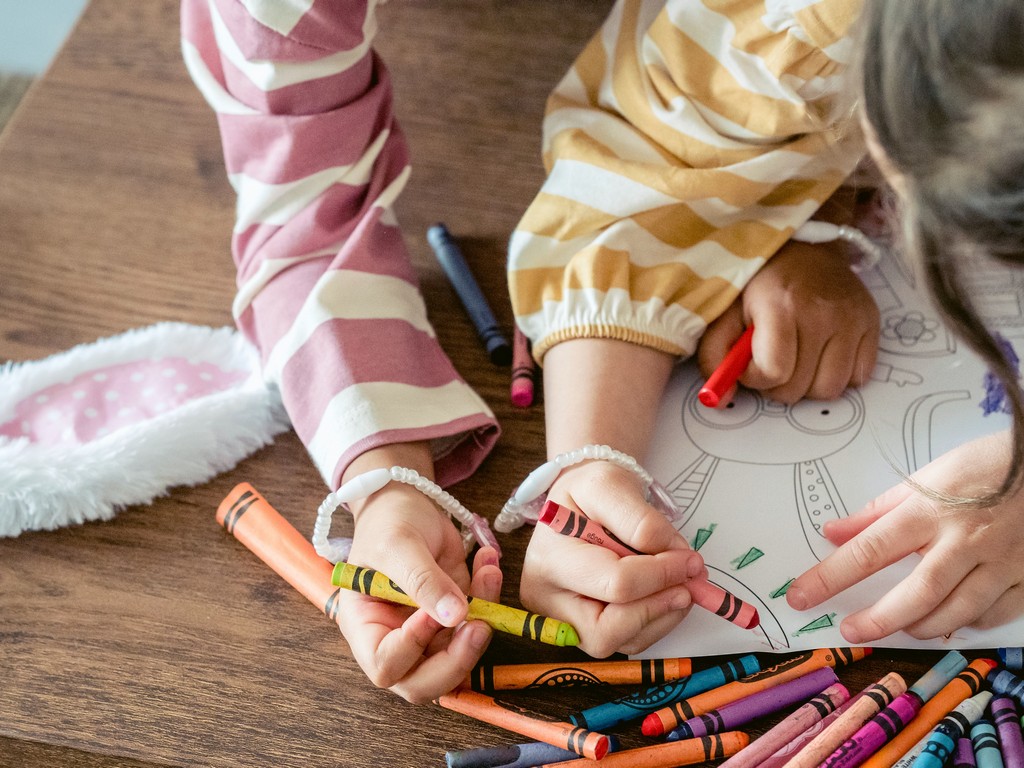The Importance of Parental Involvement in Catholic CCD and How You Can Help Your Child Succeed
The Importance of Parental Involvement in Catholic CCD. Parental involvement is crucial in Catholic CCD as it plays a significant role in the faith formation of your child. CCD classes are designed to provide religious education and guidance to children, but it is the responsibility of parents to reinforce these teachings at home. By taking an active interest in your child’s CCD classes, you can help them better understand and apply the lessons they learn in class.
Here are some ways you can help your child succeed in CCD:
1. Attend parent-teacher conferences and CCD events to stay informed about your child’s progress and involvement in the program.
2. Encourage your child to attend CCD classes regularly and arrive on time.
3. Review and discuss the materials covered in class with your child, helping them to understand and apply the lessons.
4. Pray with your child regularly and attend Mass as a family.
How Continued Learning Outside of Catholic CCD Classes Can Positively Impact Your Child?
Continued learning outside of CCD classes can have a significant positive impact on your child’s faith formation and overall development. Here are some ways in which continued learning can benefit your child:
1. Develops a deeper understanding of Catholic teachings: Continued learning helps children develop a deeper understanding of Catholic teachings and principles. This understanding helps them navigate the complexities of the world and make informed decisions guided by their faith.
2. Encourages spiritual growth: Continued learning helps your child to grow spiritually and develop a closer relationship with God. By exploring the teachings of the Church, your child can discover new ways to live out their faith and deepen their spiritual life.
3. Promotes critical thinking skills: Continued learning requires active engagement and critical thinking. This process helps children develop problem-solving skills and encourages them to ask questions and seek answers.
Effective Teaching Strategies for Catholic CCD Teachers
Teaching Catholic CCD classes can be a challenging but rewarding experience. As a CCD teacher, it is important to use effective teaching strategies to engage your students and help them learn and grow in their faith. Here are some effective teaching strategies that can help you be successful in your CCD classroom:
1. Create a positive classroom environment: A positive classroom environment is essential for effective teaching. Creating a welcoming and inclusive environment can help students feel comfortable and engaged in the learning process.
2. Use a variety of teaching methods: Using a variety of teaching methods can help keep students engaged and interested in the lesson. Incorporating activities, discussions, and multimedia resources can help students learn in different ways.
3. Encourage active participation: Encourage students to actively participate in the lesson by asking questions, sharing their thoughts, and engaging in discussions.
7 Creative Teaching Ideas for Catholic CCD Teachers
Teaching Catholic CCD classes can be a rewarding experience, but it can also be challenging to keep students engaged and interested in the material. Here are seven creative teaching ideas that can help you be successful in your CCD classroom:
1. Use storytelling: Storytelling is a powerful way to engage students and help them connect with the material. Use stories from the Bible or personal experiences to connect with your students and help them understand the message you are trying to convey.
2. Incorporate multimedia resources: Multimedia resources such as videos, music, and images can help bring the lesson to life and make it more engaging for students.
3. Conduct debates: Debates can be an effective way to encourage students to think critically and engage with different perspectives. Choose a topic related to the lesson and have students debate their viewpoints.
4. Use games and activities: Games and activities can be a fun and interactive way to help students learn and retain information. For example, you could create a Bible scavenger hunt, a Catholic trivia game, or a role-playing activity to help students understand different scenarios.
5. Assign group projects: Group projects can help students learn to work collaboratively while also allowing them to explore the lesson more creatively. For example, you could have students create a poster or presentation on a particular topic related to the lesson.
6. Take field trips: Field trips can be a great way to help students connect with the material in a real-world context. Visit a church or religious site, attend a mass or service, or participate in a community service project.
7. Invite guest speakers: Inviting guest speakers, such as a priest, a religious sister or brother, or a member of the community, can provide a unique perspective and help students connect with the lesson in a more personal way.
The Best Resources for the Catholic CCD Curriculum
The Catholic CCD curriculum is designed to help students learn and understand the teachings of the Catholic Church. There are many resources available to help teachers plan and implement their lessons effectively. Here are some of the best resources for the Catholic CCD curriculum:
1. The United States Conference of Catholic Bishops (USCCB) – The USCCB provides a wealth of resources for Catholic educators, including lesson plans, curriculum guidelines, and teaching strategies.
2. Sadlier Religion – Sadlier Religion offers a variety of resources to support the Catholic CCD curriculum, including textbooks, workbooks, and online resources.
3. Loyola Press – Loyola Press offers a wide range of Catholic resources, including curriculum materials, lesson plans, and online resources.
4. Dynamic Catholic – Dynamic Catholic provides a variety of resources for Catholic educators, including videos, books, and other materials to help bring the Catholic faith to life.
5 Creative Learning Ideas to Try at Home for Catholic CCD Students
Here are 5 creative learning ideas to try at home for Catholic CCD students:
1. Create a family altar: Encourage your students to create a family altar at home where they can pray and reflect on their faith together. This can be a great way to reinforce the importance of faith in their daily lives.
2. Use Catholic coloring books: Catholic coloring books can be a fun and engaging way to help students learn about the Bible, the saints, and other aspects of the Catholic faith.
3. Watch Catholic movies: Many Catholic movies can help bring faith to life for students. Consider watching movies such as “The Passion of the Christ,” “The Miracle of Our Lady of Fatima,” or “The Song of Bernadette.”
4. Listen to Catholic podcasts: There are many Catholic podcasts available that cover a wide range of topics related to the faith. Encourage your students to listen to these podcasts and discuss them with you.
5. Read Catholic books: Many Catholic books can help students deepen their understanding of the faith.
Top 7 Learning Games to Play with Your Catholic CCD Student
I would be happy to suggest some learning games to play with your Catholic CCD student. Here are the top 7 learning games:
1. Bible Bingo: Create bingo cards with Bible verses or characters and have students mark off squares as they are mentioned in class or during readings.
2. Saint Match: Print out pictures of saints and have students match them with their names and stories.
3. Bible Trivia: Create a trivia game with questions related to Bible stories, characters, and teachings.
4. Faith Scavenger Hunt: Create a list of items related to the faith and have students search for them around the house or in the classroom.
5. Rosary Relay: Divide students into teams and have them race to see who can complete the rosary the fastest.
6. Saint Charades: Have students act out the stories of different saints while the rest of the class guesses who they are.
7. Catholic Memory Game: Create a memory game with pictures of Catholic symbols, saints, and traditions.
How to Encourage Continued Learning Outside of Catholic CCD Classes?
Encouraging continued learning outside of Catholic CCD classes is a great way to help your student deepen their understanding of the faith. Here are some tips to encourage continued learning:
1. Provide resources: Give your student access to Catholic books, podcasts, videos, and websites that they can explore on their own time.
2. Encourage reflection: Ask your student to reflect on what they learned in class or during church services. Encourage them to write in a journal or have a discussion with you about their thoughts and feelings.
3. Attend church events: Take your student to church events such as adoration, Stations of the Cross, or volunteer opportunities.
4. Incorporate faith into daily life: Encourage your student to incorporate their faith into their daily life. For example, they can pray before meals, attend daily Mass, or read the Bible before bed.
5. Join a youth group: Encourage your student to join a Catholic youth group where they can meet other students their age who share their faith.

Daniel Hill is a Catholic educator with over 10 years of experience in the field. He holds a Master’s degree in Catholic theology from Brescia University and has taught at several Catholic schools across the country. John is passionate about promoting Catholic education and helping students develop their faith alongside their academic skills. He has written extensively on Catholic education topics, including curriculum development, faith formation, and the role of Catholic schools in society. His work has been published in numerous academic journals and he is a frequent speaker at Catholic education conferences. In his free time, Daniel enjoys volunteering at his local parish and spending time with his family.

1 thought on “The Importance of Parental Involvement in Catholic CCD and How You Can Help Your Child Succeed”